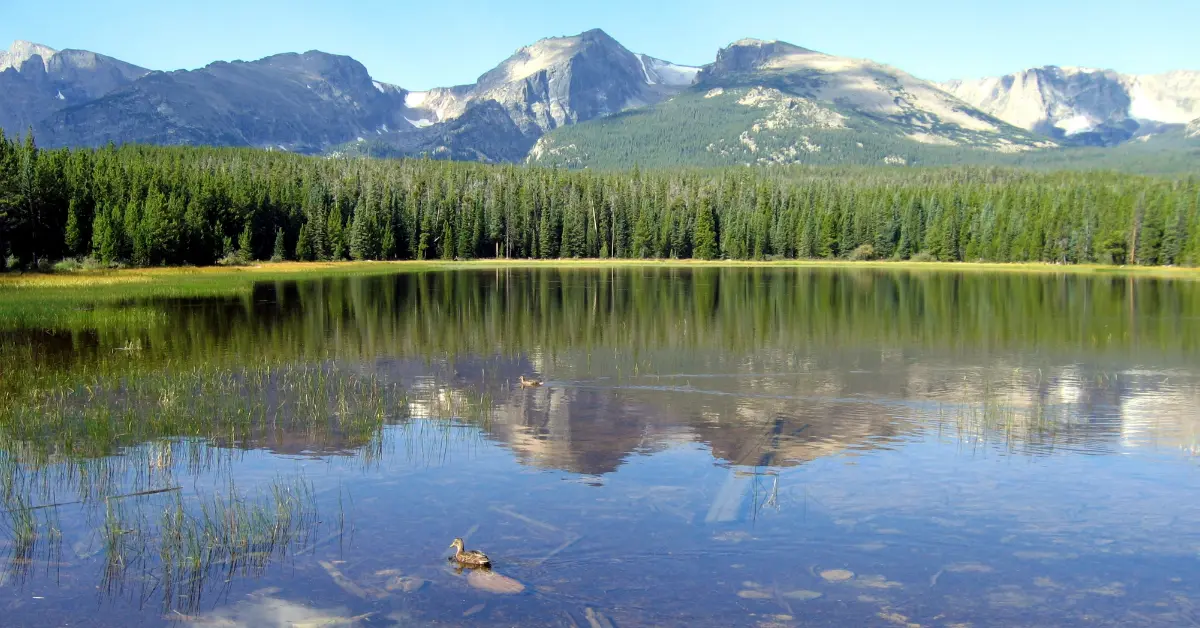Nestled in the heart of the majestic Rocky Mountains, Rocky Mountain National Park in Colorado is a haven for nature enthusiasts and adventure seekers alike.
This pristine wilderness offers visitors a unique opportunity to experience the wonders of high-altitude ecotourism, where they can immerse themselves in breathtaking landscapes, encounter diverse wildlife, and learn about the importance of preserving delicate ecosystems.
In this article, we will embark on a journey to explore Rocky Mountain National Park and discover the beauty and significance of high-altitude ecotourism.
A Natural Wonderland
Spanning over 415 square miles, Rocky Mountain National Park is a vast expanse of wilderness that boasts alpine forests, meadows filled with wildflowers, rugged mountain peaks, and pristine glacial lakes. The park’s diverse ecosystems support a wide array of plant and animal species, making it a treasure trove for biodiversity.
Wildlife Encounters
One of the highlights of ecotourism in Rocky Mountain National Park is the chance to witness the park’s diverse wildlife in their natural habitat.
Visitors may spot majestic elk roaming through meadows, bighorn sheep scaling the steep cliffs, and marmots playfully darting among the rocks. Lucky observers might even catch a glimpse of elusive predators like mountain lions and bobcats.
Trailblazing Adventures
For those seeking outdoor adventures, the park offers an extensive network of trails catering to all levels of hikers. From leisurely strolls along tranquil lakeshores to challenging summit hikes, Rocky Mountain National Park has something for everyone.
Popular trails include the Emerald Lake Trail, the challenging Longs Peak Trail, and the picturesque Bear Lake Loop.
A Sky of Stars
As the sun sets over the Rocky Mountains, a breathtaking display of stars emerges in the clear night sky. Rocky Mountain National Park is recognized as an International Dark Sky Park, making it an ideal destination for stargazers. Away from the city lights, visitors can witness constellations, meteor showers, and the Milky Way in all its splendor.
Protecting Fragile Ecosystems
High-altitude ecotourism comes with a responsibility to protect the delicate ecosystems that thrive in these rugged landscapes. The park’s management and conservation efforts aim to strike a balance between allowing visitors to enjoy the wilderness and preserving its natural integrity.
Sustainable practices, such as designated trails, waste management, and educational programs, encourage visitors to minimize their impact and appreciate the importance of conservation.
Unique Flora and Fauna
The diversity of ecosystems in Rocky Mountain National Park provides a home to unique and resilient plant species adapted to high-altitude conditions. Delicate alpine flowers bloom for a short period during the summer, painting the meadows with vibrant colors. Among them, the state flower of Colorado, the Columbine, graces the landscape with its distinct beauty.
Eco-Friendly Accommodations
For a fully immersive ecotourism experience, visitors can choose from various eco-friendly accommodations available near the park. These lodges and cabins follow sustainable practices, such as energy conservation and waste reduction, ensuring that the stay itself aligns with the principles of ecotourism.
Conclusion
Rocky Mountain National Park stands as a testament to the majesty and significance of high-altitude ecotourism. With its diverse landscapes, abundant wildlife, and dedication to conservation, this natural wonderland offers an enriching experience for all who venture into its wilderness.
As visitors explore the park’s pristine trails and gaze upon the starlit skies, they are reminded of the delicate balance between human interaction and ecological preservation.
By embracing sustainable practices and fostering a deeper understanding of the importance of protecting these fragile ecosystems, travelers can ensure that future generations can continue to appreciate the untamed beauty of Rocky Mountain National Park for years to come.











